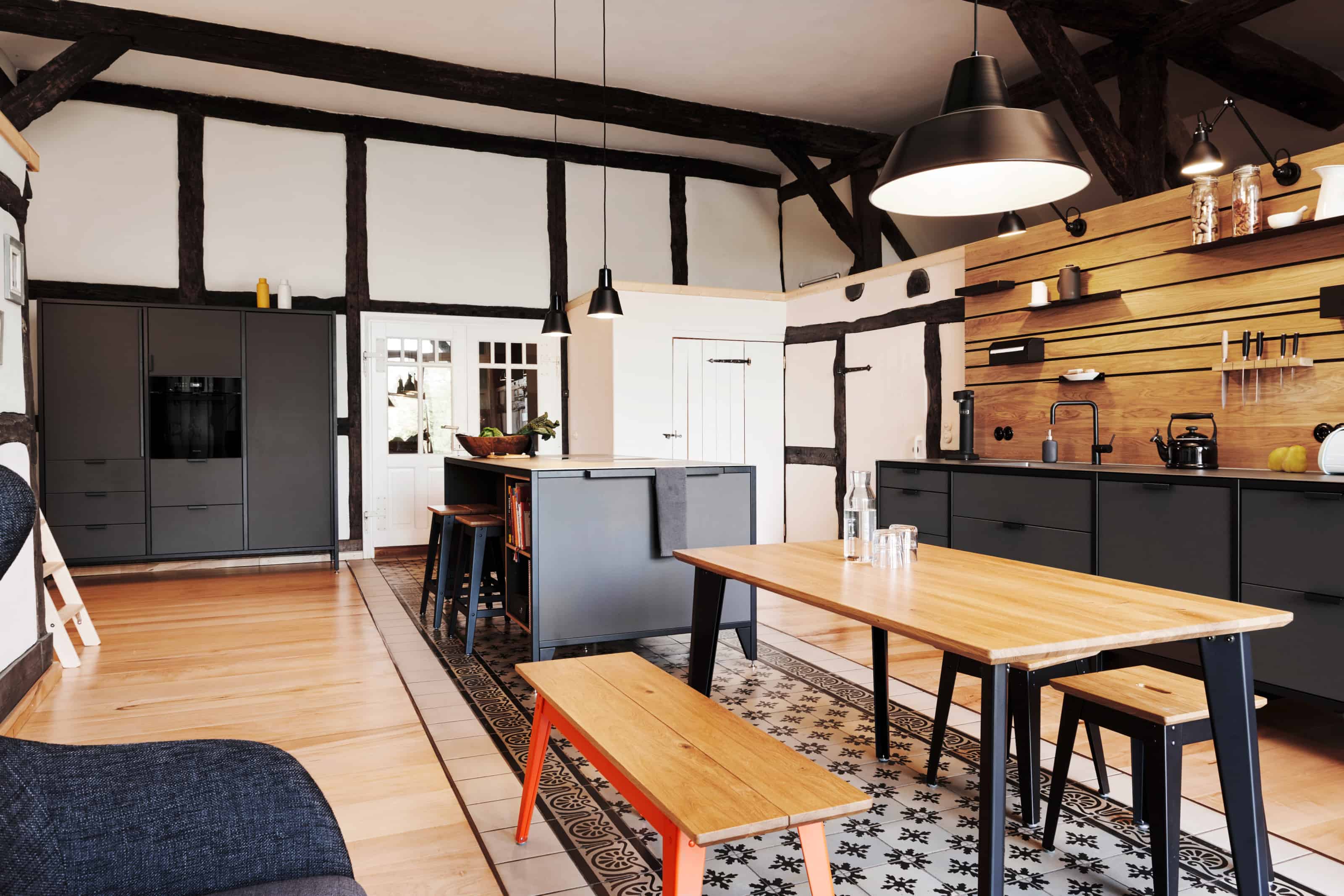Back
Home / Journal / Uncategorized / Industrial design in a country house under a reed roof
Industrial design in a country house under a reed roof
In a faithfully renovated and listed farmhouse from 1755 with a thatched roof, half-timbering and clay plaster, there is a fairly new minimalist designer kitchen. Does that fit? Yes, it fits, and very well indeed. Because both the house and the kitchen furnishings are timelessly functional and destined to last forever.

When the current residents, a family of five from southern Germany, bought the Low German hall house around seven years ago, the previous owners had already spent years renovating it in line with its listed status and in an environmentally friendly manner – with clay walls, original composite windows and lots of other historic building materials. They also equipped it with modern environmental technology, from photovoltaics to a biological sewage treatment plant. So for a start, it was already possible to live really well inside. With great diligence and energy, the outdoor area was first made fit for other residents such as Pitou donkeys, woolly pigs, Valais black noses and the rest of the extraordinary animal family.
A house directly behind the dyke
It was precisely this house that attracted the current homeowners to Lenzerwische. “If this house had been somewhere else, we would have moved somewhere else,” says the homeowner. The only room that the new owners remodelled was the kitchen. They had a large kitchen installed where the farmers used to bring in the harvest by horse-drawn cart and where a hallway later led into the house. Together with interior designer Vivian Graé, we developed a concept that transformed the former passageway area into a central living space.
Farmhouse with industrial charm
The kitchen is functional and durable thanks to its extremely hard-wearing surface and materials. The steel frame and linoleum kitchen front combine to create an impressively clear industrial-style design.
A tall module with space for a fridge and additional storage space, a wall module with a kitchen board and an island module were planned for the kitchen in the country house. The cooking island is so wide that guests, for example, can sit on kitchen stools on the other side and take a curious look at the pots and pans. The large dining table, where the family gathers to eat together, looks like an extension of the cooking island.
JAN CRAY’s values, such as sustainability, craftsmanship and high-quality design, suited the homeowners and the listed building very well from the outset. And the industrial style of the kitchen also blends in perfectly visually. The whole thing looks timeless, elegant and simply high-quality. The family agrees: “The kitchen is the most beautiful room in the whole house.”
Photography: Benno Cray